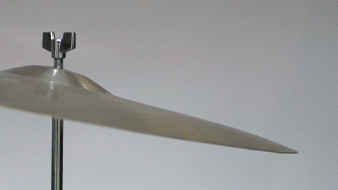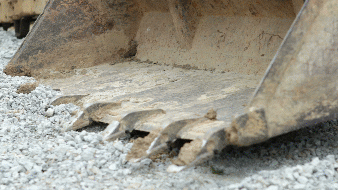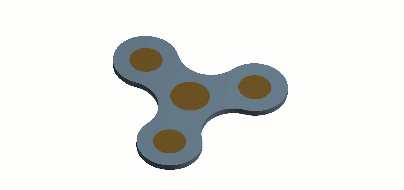Homework, Quizzes, Simulation Examples — Time Domain Dynamic Problems — Lesson 6
Simulation Examples
Several practical simulation examples of modal analysis are provided here. Each of them comes with a description file, video instruction and Ansys simulation file. Download the student version of Ansys software here.
(1) Drum cymbal MSUP transient analysis
Mode superposition (MSUP) is an efficient approach to do transient analysis for linear dynamic problems. Check out this drum cymbal analysis. Can you explain the relationship between this modal analysis and transient structural analysis? Download the zip file and extract the contents. Go through the Readme file. Follow along with the provided How To Video file.


(2) Bottlecap stress relaxation analysis
As mentioned in the lecture, bottlecaps are usually made of polymer plastics and can undergo stress relaxation with time. You are encouraged to explore this simulation and find out how stress relaxation changes the contact pressure between the bottle and cap. Download the zip file and extract the contents. Go through the Readme file. Follow along with the provided How To Video file.

(3) Transient analysis of a digger arm
The movement of a digger arm involves high inertia due to a large mass, so time-domain effects need to be considered. This simulation illustrates how to use transient analysis to simulate the movement of a digger arm and find the stress distribution of critical components. Download the zip file and extract the contents. Go through the Readme file. Follow along with the provided How To Video file.


(4) Nonlinear Transient Analysis of a Camshaft Assembly
A camshaft is an important component of a heat engine. It controls both the input of fuel and the output of exhaust. As mentioned in the lecture, the time-dependent displacement nature of this process makes the time-domain effect non-negligible. This simulation uses a transient analysis to find out the dynamic response (reaction force, stress distribution, etc.) of a camshaft assembly. Download the zip file and extract the contents. Go through the Readme file. Follow along with the provided How To Video file.

(5) Fidget spinner analysis
A fidget spinner is designed to spin with little effort. It is also a nice example to illustrate the effect of inertia. This simulation example shows two analyses of a fidget spinner. An initial moment is applied to the spinner and it rotates due to inertia. Compare these two analyses and find out why the aluminum spinner has a higher velocity than the steel spinner, providing that the same moment is applied to them. Download the zip file and extract the contents. Go through the Readme file. Follow along with the provided How To Video file.


Homework
(1) Solder bump creep analysis
Creep, which occurs as a result of long-term exposure to high-level constant stress that does not exceed yield strength in magnitude, makes the material deform continuously. In this document, the creep behavior of solder bumps on a chip under a severe change in temperature is simulated in Ansys Mechanical. The chip is applied in an environment where drastic temperature changes occur periodically, and the temperature change accelerates the solder bumps' creep deformation. When designing chips for such applications, the creep behavior needs to be considered.
The generalized Garofalo material model is used to consider the creep behavior; the corresponding material parameters are listed in the Readme file. Due to symmetry, only one-eighth of the model is simulated. Follow the instruction files to reproduce the thermal loading and creep behavior of the solder bumps. Think about the following question while creating the model:
Creep is a time-dependent material behavior, so why can this simulation be done in a static structural analysis system?
Download the zip file and extract the contents. Go through the Readme file. Follow along with the provided How To Video file.

